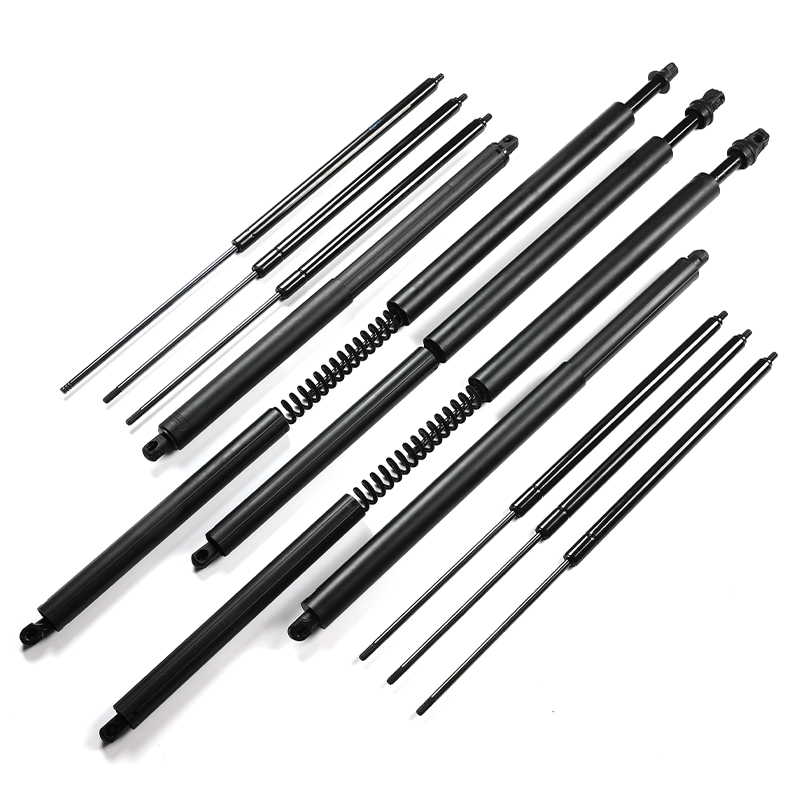Bonnet gas struts, also known as bonnet lift supports, are essential components in modern vehicles, playing a crucial role in ensuring the smooth and safe operation of the vehicle’s hood or bonnet. These gas struts are used to hold the bonnet in an open position, providing easy access to the engine bay for maintenance and repairs, while also ensuring that the bonnet stays securely in place when closed.
The strut works through the action of gas pressure within the cylinder, and its spring-like mechanism allows it to push the bonnet upward, providing a steady and controlled motion. Once the bonnet is raised, the strut locks into position, keeping the bonnet securely open until it is manually closed.
Support and Stability: The primary function of bonnet gas struts is to provide support and stability to the bonnet when it is opened. This makes it easier for vehicle owners or mechanics to access the engine compartment for maintenance, repairs, or inspections. Without gas struts, lifting the bonnet could be difficult, and there would be a risk of the bonnet falling back down unexpectedly.
Smooth and Controlled Operation: Gas struts allow the bonnet to open smoothly and remain in a fixed position without the need for external support. They provide controlled movement, which reduces the risk of sudden drops or jerky motions that could potentially damage the vehicle or cause injury.
Safety: By holding the bonnet in a fixed position, bonnet gas struts enhance safety by preventing the bonnet from falling while the user is working under it. This is particularly important in heavy bonnets, which could cause serious injury if they were to suddenly drop.
Convenience: Gas struts make the process of opening and closing the bonnet much easier. The support provided by the struts reduces the amount of force required to lift the bonnet, allowing users to perform routine maintenance tasks with minimal effort.

Bonnet gas struts come in various types, each designed for specific applications based on the weight and design of the bonnet. The key differences between these struts are their size, pressure rating, and the materials used for construction. Some common types of bonnet gas struts include:
Standard Gas Struts: These are the most common type of gas struts used in vehicles. They offer a balance between performance and cost, providing reliable support for bonnets of various sizes and weights. Standard gas struts are commonly found in passenger vehicles and light trucks.
Heavy-Duty Gas Struts: These struts are designed for larger vehicles with heavier bonnets, such as SUVs, trucks, and commercial vehicles. They are built to handle increased weight and provide enhanced support and stability. Heavy-duty gas struts often feature stronger cylinders and higher pressure ratings to accommodate the added load.
Twin-Tube Gas Struts: Twin-tube gas struts have two separate tubes inside the cylinder, providing additional strength and stability. They are typically used in vehicles that require more precise control and additional support for larger bonnets. These struts are known for their durability and performance in demanding conditions.
Pneumatic Gas Struts: Pneumatic gas struts use air as the pressurizing medium instead of traditional compressed gas. These are less common but may be used in specific applications where air pressure offers advantages in terms of performance and environmental impact.
Enhanced Convenience: Bonnet gas struts make it easier to open and close the bonnet with minimal effort. Their smooth operation reduces the strain on users and enhances the overall experience when performing vehicle maintenance.
Improved Safety: By preventing the bonnet from falling or swinging abruptly, gas struts reduce the risk of accidents and injuries. This is especially important when the vehicle owner or mechanic is working under the bonnet.
Increased Durability: Gas struts are built to withstand repeated use, providing long-lasting performance even under harsh conditions. They are designed to operate smoothly over a wide temperature range, ensuring reliable function in both hot and cold climates.
Noise Reduction: High-quality bonnet gas struts are engineered to operate quietly, reducing any noise that may be caused by the movement of the bonnet. This contributes to a more comfortable experience for the user.
Reduced Wear on Hinges: Gas struts help to distribute the weight of the bonnet evenly, which reduces stress on the bonnet hinges and other components. This can help prolong the lifespan of the bonnet and its supporting structures.
To ensure that bonnet gas struts function effectively, regular maintenance is required. Over time, the gas pressure inside the strut can diminish, which may result in a weaker lifting force or an inability to hold the bonnet open. If this occurs, it is important to replace the gas struts to maintain optimal performance. Some signs that bonnet gas struts may need replacing include:
The bonnet is difficult to open or close.
The bonnet fails to stay open and starts to fall on its own.
There is visible damage to the strut or leaks of gas.
The strut produces unusual noises during operation.
When replacing bonnet gas struts, it is essential to select the correct type and size for the vehicle. Incorrect struts may not provide adequate support, leading to safety concerns and potentially damaging the vehicle.